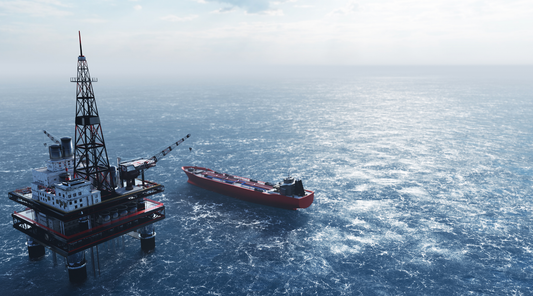Your cart is empty

Getting started with two-way radio
Posted on August 12, 2020 by Jenna Foster
Radios can help anyone who needs co-ordination and instant communication within their team. We cover some of the basics to help you understand whether radio can improve productivity in your business.
Instant communication

These days we are used to having our mobiles with us almost all of the time. With email, social media and messaging notifications filling the screen sometimes the important stuff gets left behind.
A radio is used solely for the purpose of contacting a person or group at the point you need to give or receive information. There's no waiting for the other person to answer or reply to you - your message will be heard loud and clear prompting the response you need instantly.
No ongoing subscription costs
Breathe a sigh of relief…there's no pre-paid, pay monthly, units, expirations or rates per minute to take in. Once you've purchased your radios you will not need to pay out for the usage. If you have a requirement which requires a spectrum licence from Ofcom you will pay anything from £75 to £10,000 for a year.
For most basic business applications the cost will be minimal and certainly less than the cost of running mobile or satellite phones.

What's the range like?
Radio to radio communication without any additional infrastructure will provide communication at a range of up to 10 km although this is dependent on conditions. So if you require a range of 10 km + you will need to install additional equipment such as repeaters and antennas.
Alternatively you could consider satellite phones as a quick, out of the box solution.
UHF or VHF?
Without going into the details on how each work there's no better option - it all depends on how and where you will use the radios.
As a rule UHF is for built up, urban areas while VHF is the choice for rural or marine use.
Land or Sea?
Radios designed for use on land are not dissimilar to marine radios in their appearance but it is always important to choose a marine radio if your intention is to use it at sea.
Two-way Radio Features
So what can they do? From a distance radios can look limited to just voice communication but their technology has evolved to include so much more.
- Voice - Communicate on a one-to-one or one-to-many basis with the setup of talkgroups. Of course this is the primary use for most radios.
- SMS/Messaging
- Tracking - used in conjunction with the Emergency Alarm and Lone Worker function below this feature can be very useful. Alternatively it can be used to track the location of workers and plan routes and schedules accordingly.
- Emergency Alarm - use a dedicated button to send an emergency alert.
- Lone Worker Function - can initiate an emergency if the user does not respond to periodic alerts.
Not all features are available on every model and may not be required for all users. There is a wide range of models available to suit every requirement and budget.
Our top two-way radio picks
Standard Horizon HX210E VHF Radio
The HX210 is a VHF handheld built for marine use radio that is buoyant and waterproof.
The VHF radio also has dedicated emergency channels, automatic strobe light activation and large display.
ICOM IC-M25 VHF Radio
The new ICOM IC-M25 has the lightest body in the market for a floating VHF radio.
With a slim design and LCD Screen, this marine radio offers simple and straightforward operation for all users.
Motorola XT660 Two-Way Radio
The Motorola XT660d Two-Way Radio offers voice and SMS messaging capabilities to assist with the communications of your business. This licence free radio is designed to enhance efficiency for employees and employers.
What can we do for you?
We stock a wide range of business and leisure radios both licensed and unlicensed. If you think two-way radio could be helpful our recommendation is to consider the following points:
- What environment will the radios be used in?
- Is there anything that could interfere with the signal?
- Do the radios need to be compatible with any existing system?
- What additional features do you require? e.g. messaging, tracking
- Do you require extra batteries or chargers?
This list is a starting point to help us build a quote tailored to your requirements. The information provided in this post really is an overview of what two-way radio can offer, we'd love to hear about your specific situation to see how it can improve your comms setup.



